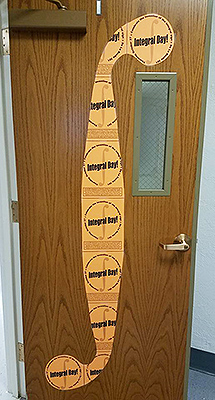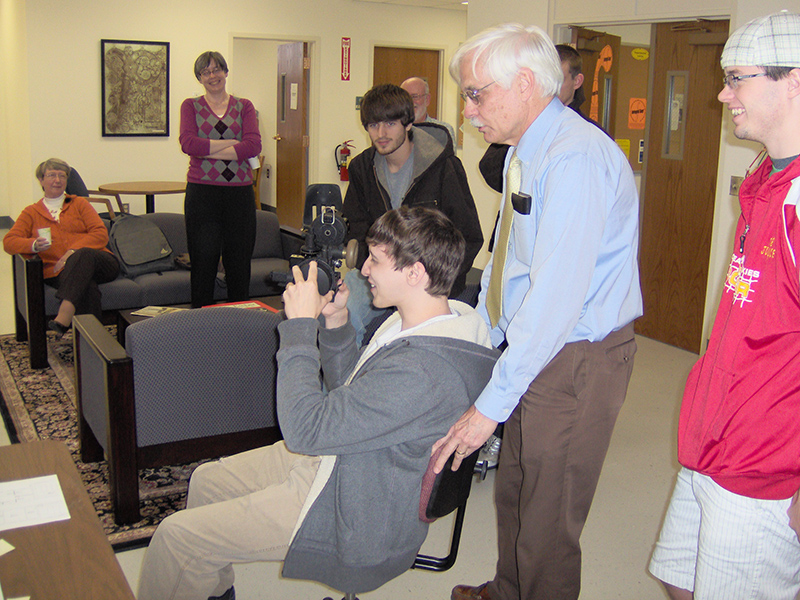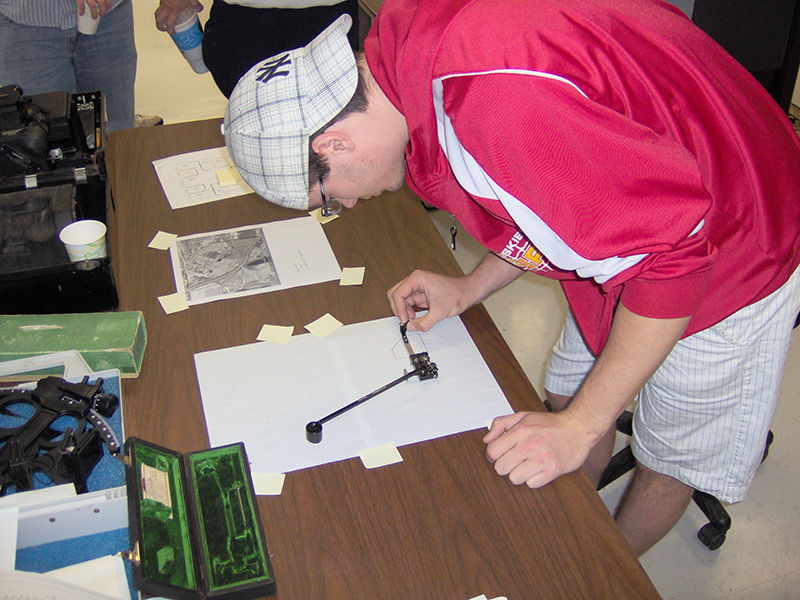
 October 29 is Integral Day! Why? The modern integral sign was first written on October 29, 1675, by the great German mathematician Gottfried Leibniz (1646–1716) in an unpublished manuscript. Given the importance of Calculus (it’s one of the most useful inventions in the second millennium A.D.) and the importance of integration (it’s one of the three fundamental concepts in Calculus), we just have to celebrate.
October 29 is Integral Day! Why? The modern integral sign was first written on October 29, 1675, by the great German mathematician Gottfried Leibniz (1646–1716) in an unpublished manuscript. Given the importance of Calculus (it’s one of the most useful inventions in the second millennium A.D.) and the importance of integration (it’s one of the three fundamental concepts in Calculus), we just have to celebrate.
Our festivities occur in and near the Math Suite and include "calculus cookies" and "summation cider," integral/summation decorations, and a large display filled with "integral graffiti." Courageous students compete in an integral contest: the student who solves the most integrals wins a "Math is an integral part of my life" coffee mug and the admiration of their peers. Many components of our celebration have a Halloween theme, due to the proximity of Integral Day to October 31st.
In the spring, the Mathematics Department celebrates Pi Day on March 14.

For Integral Day 2022, Dr. Hill's Calculus II class decorated the Integral Day display with "integral graffiti," including LOTS of math jokes. From left to right: Dr. Hill, Mitch, Chris, Carolyn, Abby, and Alex.
Mechanical integrators
Some of our celebrations featured demonstrations of mechanical integrators by Phil Winger, former associate vice president for facilities at St. Bonaventure. A mechanical integrator is a device that mechanically solves a problem that definite integrals solve.
Mr. Winger presented a bubble sextant and a polar planimeter.
The bubble sextant
A bubble sextant was used by the navigator of a navy patrol bomber airplane to observe the angle from the vertical of celestial bodies like the sun. It uses a bubble as a vertical reference by superimposing the image of the bubble on that of the sun, seen through an adjustable prism. Mr. Winger owns a model from the early 1940s.
The trouble with using a bubble reference is that it is subject to accelerations other than that of gravity, such as the rocking of the aircraft in turbulence. A solution to this problem is to average the readings over a period of time much longer than the period of perturbations. Winger's device averages the reading of the instrument over a two-minute period.
Averaging a function over an interval is an application of integration, making a bubble sextant a mechanical integrator.

A student uses a bubble sextant as Phil Winger provides "turbulence."
The polar planimeter
A planimeter is an instrument that allows a person to measure the area of a region by tracing its boundary. There are a variety of types of planimeters; Mr. Winger owns a polar planimeter.
Computing the area of a region is a classic application of integration, making a planimeter a mechanical integrator.
The operation of a polar planimeter can be explained using Green's Theorem.

A student uses a polar planimeter to measure the area of a region by tracing its boundary.